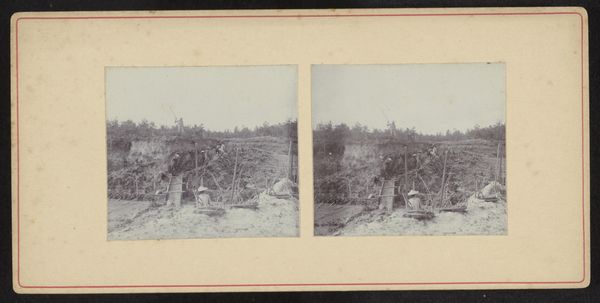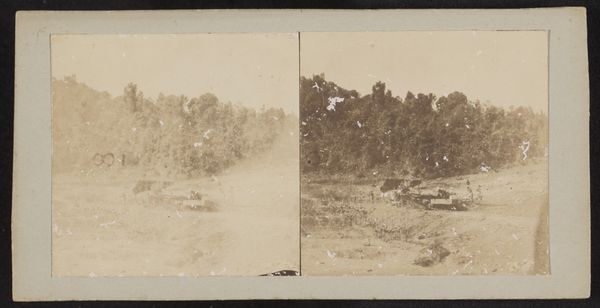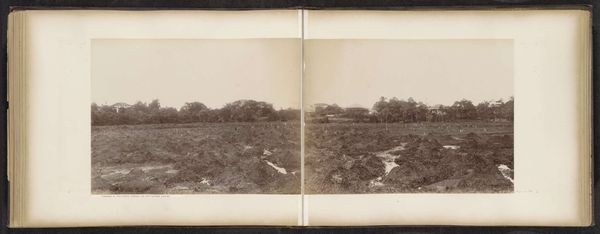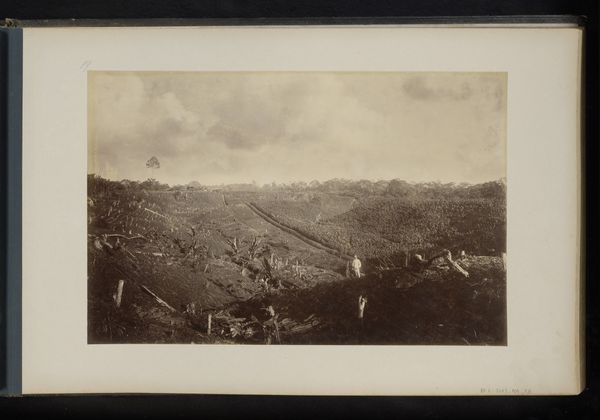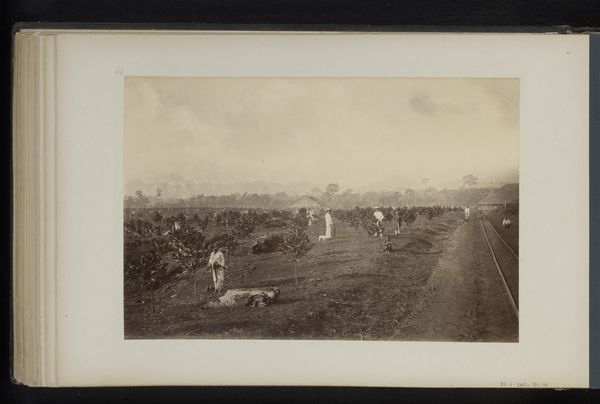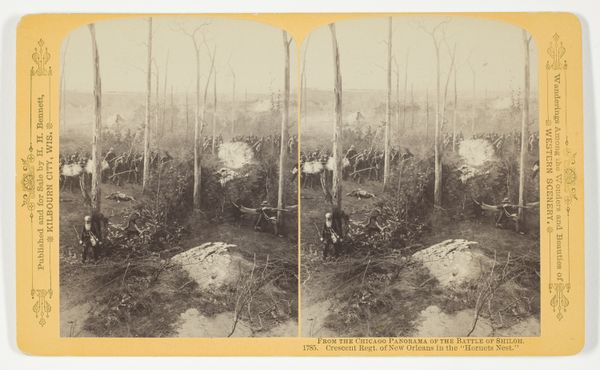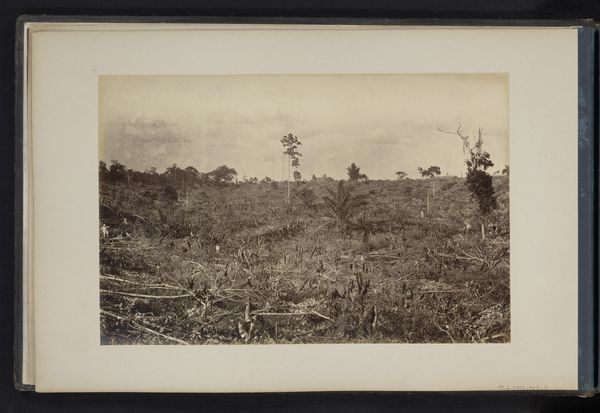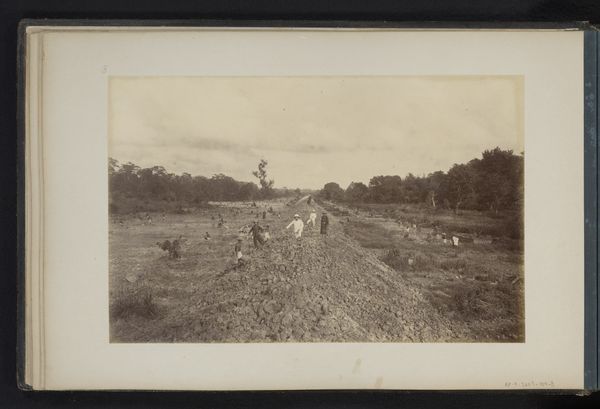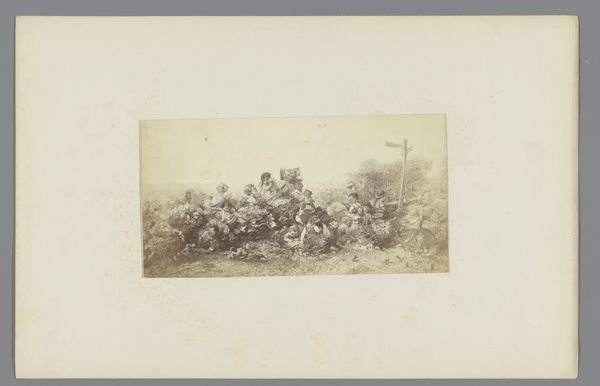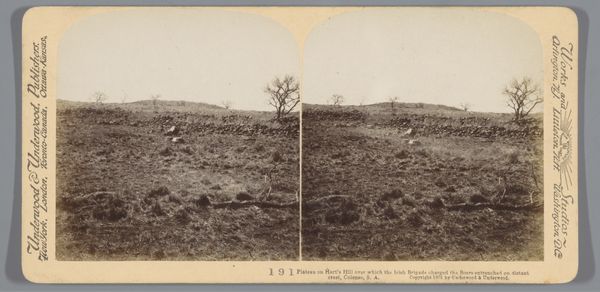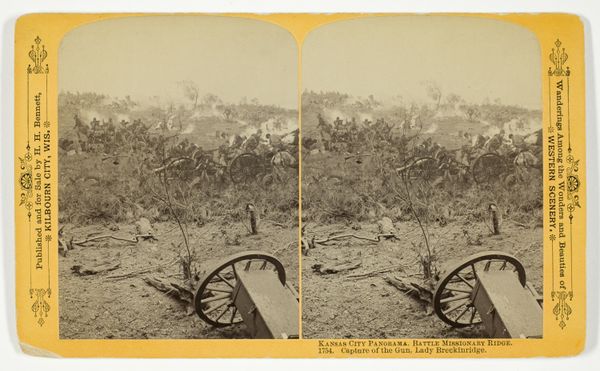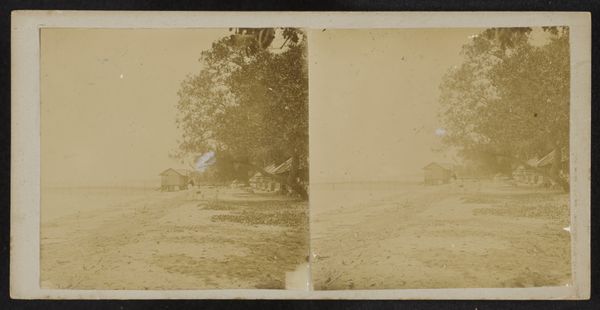
photography, gelatin-silver-print
#
landscape
#
photography
#
gelatin-silver-print
Dimensions: height 55 mm, width 60 mm, height 88 mm, width 178 mm
Copyright: Rijks Museum: Open Domain
Curator: What a scene of disruption and… is that purposeful order emerging? This gelatin silver print, "Werk in open terrein" which translates to "Work in open terrain," captured sometime between 1900 and 1922 by Robert Julius Boers, certainly has me curious about what kind of labor we're seeing here. Editor: It's striking how muted the landscape appears. Like a theater stage that's had the curtain dropped. There's a rawness to it. Almost unsettling in its depiction of nature interrupted. It seems a strangely neutral rendering of something that is, by implication, extremely charged. Curator: The physical act of transforming the land would certainly be grueling work in this period. Considering the materiality of photography at the time and the techniques that Boers must have been employing with silver and gelatin, you start thinking about this intersection between manual labour on the terrain itself and the skilled processes involved in producing this image. Editor: Right. Because even the seeming straightforwardness of this composition belies a far more complex power dynamic. Land ownership. Natural resource management. Who is it for and who is doing the work? Looking closely at these laborers raises essential questions. Is it forced or free? What community do they represent, and is their identity linked in any meaningful way to the open terrain we are beholding in two views? Curator: It highlights a kind of unsentimental realism. The artist isn't romanticizing toil. The physical tools might also tell stories of their own about resource availability. Also, Boers would need to haul this specialized gear to a location—that, in itself, is another aspect of the working process that should not be overlooked. Editor: I wonder if that labor extends beyond the physical to the political? Are they shaping the land according to the desires and intentions of a dominant power? Considering colonialism and the societal inequalities pervasive throughout this era, this image is a lens through which we can unpack deeper structural problems inherent in capitalism and class struggle. Curator: I agree; the historical and material details can significantly expand the image beyond pure visual consumption, drawing attention to often overlooked contexts and labor relations. Editor: Precisely, that kind of careful consideration prevents the consumption of the artwork as simply aesthetics and redirects that appreciation toward the social dimensions. Curator: This work, I feel, invites us to recognize the value of a holistic and detailed evaluation of any subject at hand. Editor: Yes, for me this piece encapsulates the ability of art to prompt challenging conversations about labor and lived experiences.
Comments
No comments
Be the first to comment and join the conversation on the ultimate creative platform.
